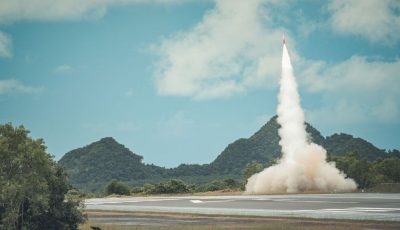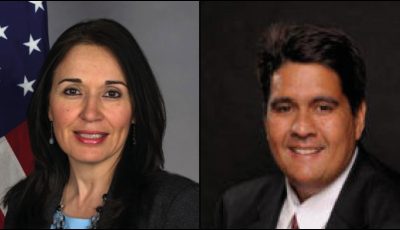Marine sanctuaries in American Samoa, Palau ink accord
WASHINGTON, D.C.—The U.S. Department of Commerce’s National Oceanic and Atmospheric Administration has signed a memorandum of understanding with Palau’s International Coral Reef Center on marine protected areas, including the establishment of a sister sanctuary arrangement between Puipuiga lautele o le Gataifale o Amerika Samoa, the National Marine Sanctuary of American Samoa, and the Euotelel a Klingil a Debel Belau, the Palau National Marine Sanctuary.
The agreement, which was signed in a virtual ceremony last Dec. 16, 2020, establishes a sister site partnership between the National Marine Sanctuary of American Samoa administered by NOAA and the Palau National Marine Sanctuary, which is administered through Palau’s International Coral Reef Center. It also expands opportunities for regional collaboration in marine protection by connecting the U.S. territory of American Samoa in Polynesia in the South Pacific, to the Republic of Palau, a Pacific Island nation in Micronesia in the northwest Pacific. This new partnership is expected to include collaboration with the national marine sanctuaries in the State of Hawaii.
“We celebrate this important collaboration between NOAA and the Palau International Coral Reef Center in the advancement of marine protected areas that are critical to island cultures and people’s livelihood,” said U.S. Department of the Interior assistant secretary, Insular and International Affairs, Douglas W. Domenech. “This agreement exemplifies the Trump administration’s ongoing support for the Pacific Islands and further strengthens the relationship between the United States and Palau.”
“This agreement will support bold actions to strengthen the conservation, management, and stewardship of Marine Protected Areas across the Pacific Islands Region that intersect with many of NOAA’s critical mission areas, for the benefit of local communities, regional interests, and the nation,” said retired Navy Rear Adm. Tim Gallaudet, Ph.D., assistant secretary of Commerce for Oceans and Atmosphere and deputy NOAA administrator. “Our Indo-Pacific partnerships are a top priority for the Trump administration, and this agreement honors our shared history with the Republic of Palau.”
In September 2019, Domenech and Gallaudet were in Palau where they co-chaired the 42nd annual U.S. Coral Reef Task Force meeting. While in Palau, they also visited the Palau International Coral Reef Center and the Palau National Marine Sanctuary, which is when the idea first began to establish this partnership between the United States and Palau.
The National Marine Sanctuary of American Samoa sanctuary comprises six protected areas, covering 13,581 square miles of nearshore coral reef and offshore open ocean waters across the Samoan archipelago and is now the largest national marine sanctuary in the National Marine Sanctuary System. Originally, though, it was the smallest: in 1986, NOAA established the sanctuary to protect and preserve the 0.25 square miles of coral reef ecosystem within Fagatele Bay. In 2012, NOAA expanded the sanctuary to include Fagalua and Fogama`a (the next bay east of Fagatele) on Tutuila Island, as well as areas at Aunu`u, Ta`u, and Swains islands, and a marine protected area at Rose Atoll (which was named Muliāva as it is known by the Manu`a residents) including nearby Vailulu`u Seamount. For more about the National Marine Sanctuary of American Samoa, visit the website at https://americansamoa.noaa.gov/.
The Republic of Palau, one of three freely associated states in a special relationship with the United States under a Compact of Free Association, was the first country in the world to announce a shark sanctuary in 2009. In 2015, Palau President Tommy Remengesau Jr. further extended protections by signing a law that designated 80% of Palau’s exclusive economic zone, approximately 193,000 square miles, to be a national marine sanctuary, which went into effect on Jan. 1, 2020.
Palau is also part of the Micronesia Challenge wherein the leaders of the Federated States of Micronesia, the Republic of the Marshall Islands, the Republic of Palau, and the U.S. territories of Guam and the Northern Mariana Islands have committed to effectively conserve at least 30% of the near-shore marine resources and 20% of the terrestrial resources across Micronesia. Both American Samoa and Palau are members of the U.S. Coral Reef Task Force where all U.S.-affiliated Pacific Islands and stateside jurisdictions collaborate to protect coral reefs.
For more about this recently established partnership between the National Marine Sanctuaries of Palau and the United States, visit https://sanctuaries.noaa.gov/news/dec20/tale-of-two-sanctuaries.html. (PR)



























